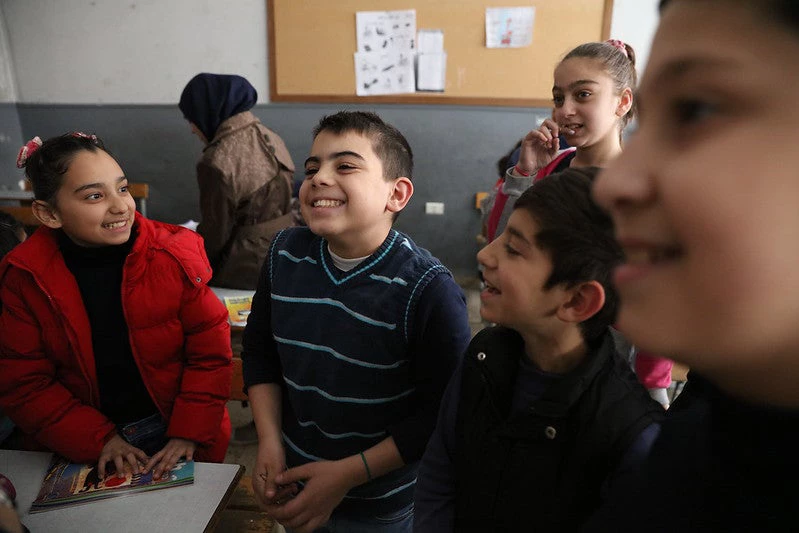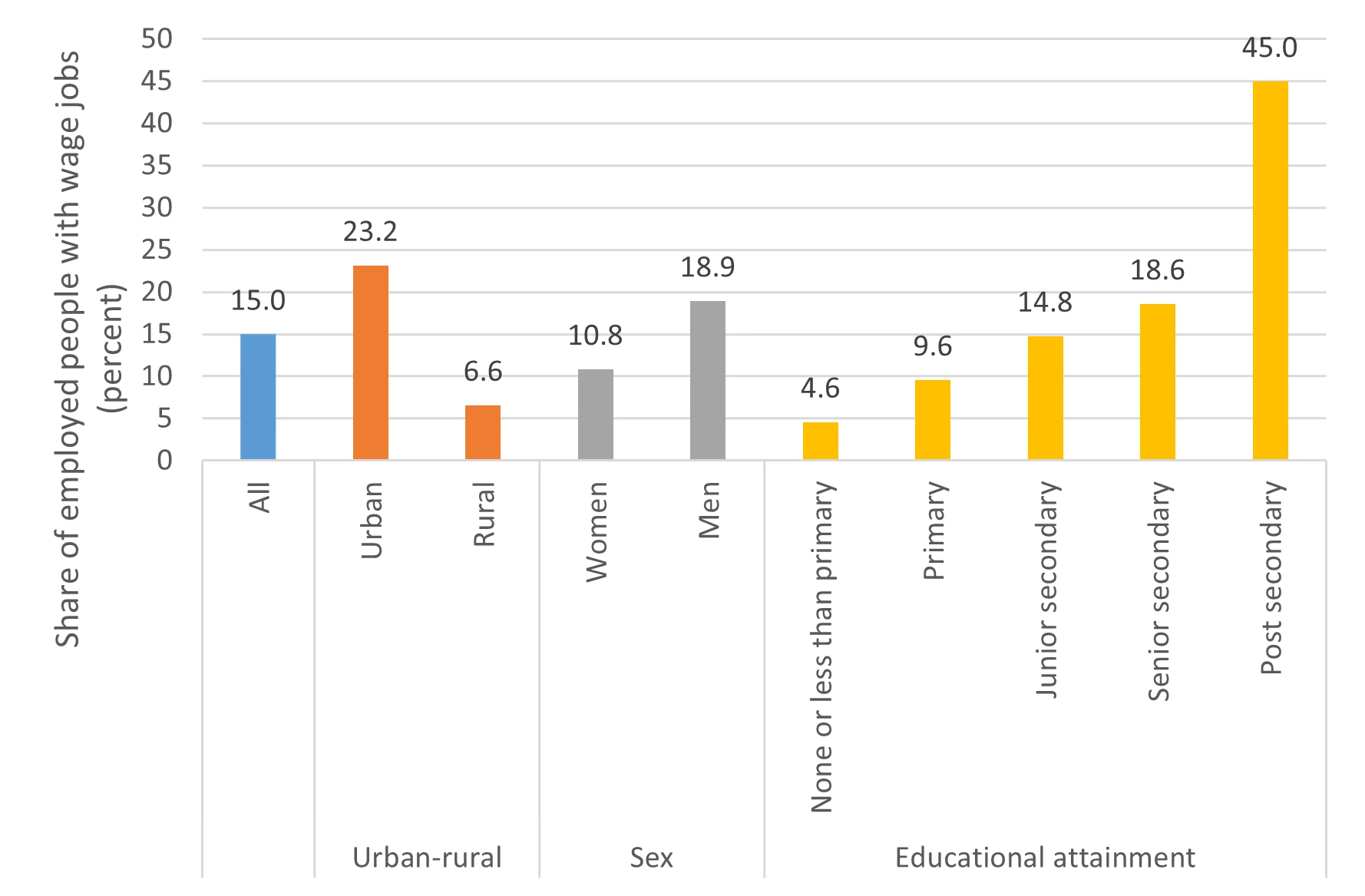 Students at the Second Bourj Hammoud Public School listen to their teacher while in class, in Beirut, Lebanon on March 23, 2016. Two-thirds of the students at the school are Lebanese and one-third of the students are Syrian.
Students at the Second Bourj Hammoud Public School listen to their teacher while in class, in Beirut, Lebanon on March 23, 2016. Two-thirds of the students at the school are Lebanese and one-third of the students are Syrian.
Imagine a scenario where a country is suddenly faced with a massive influx of refugees from a neighboring country. The host country accommodates some of these refugees in camps built on sparsely populated land, while others are settled on the periphery of urban areas, a common scenario for refugees. According to economic theory, what should we expect to happen in this situation? Additionally, does the existing evidence support the theoretical expectations? In this blog, we will explore these questions by looking at the economic and distributional effects of a refugee crisis.
From an economic perspective, we should expect the Gross Domestic Product (GDP) and household incomes of the host country to grow because of a refugee inflow. In the short-term, inhabited areas that are suddenly populated with refugees, such as refugee camps, experience GDP growth because the refugees receive aid and consume goods and services in a place that previously had no income or consumption. In already-populated areas, like urban areas, GDP will also grow as income and consumption grow with the arrival of the new population. This is simply a statistical outcome resulting from the fact that there are more people (refugees and aid workers) and more money (international aid and government spending) in a particular geographical area.
In the medium-term, we should also see local household incomes grow. With the population increase and the aid and government spending, local consumption will rise, leading to a boost in local production and sales of goods and services. The presence of refugees in the labor market could potentially reduce labor costs for employers, particularly if they work informally. As a result, local landlords, entrepreneurs, producers, and suppliers of goods and services are likely to experience a surge in income, which can lead to an expansion of their businesses and an overall growth in household income. In economic terms, these are referred to as “expansionary effects” of the economy.
We should also expect these positive effects to be accompanied by negative externalities and distributional effects that will negatively affect the most vulnerable groups among the hosts. In the short-term, areas that suddenly become home to refugees may experience resource strain and environmental degradation, which can derail local development. In urban areas, the influx of refugees may lead to water and electricity shortages, causing higher costs for both the refugees and the host community, overcrowding of services such as health and education, increased traffic and pollution, and competition for jobs and housing. These factors can result in unemployment, a surge in inflation, create tension, and increase social and economic disparities.
In the medium-term, the negative distributional effects may become evident. While some locals may experience economic gains, others may be displaced or lose their jobs due to increased competition. These negative impacts are likely to affect the most vulnerable members of the community, including women, youth, low-skilled and informal workers, and those living in degraded and marginal areas.
Does the emerging evidence from the economic literature support these theoretical expectations?
Recent research examining the economic impact of refugees on host communities, largely aligns with theoretical expectations. A comprehensive review and meta-analysis of the existing literature on the impact of refugees on host communities, which I co-authored with Kirsten Schuettler, reveals that the overall effect on household well-being in host communities is predominantly positive with very few studies finding a negative effect on household well-being.
The review also finds that most studies report no visible effects of forced displacement on either employment or wages of hosts. However, the studies that identify a significant and negative effect show that employment and wages are more likely to decline for certain groups, particularly females, youth, unskilled workers, informal workers, and lower-educated individuals. The most vulnerable workers are those who are most negatively affected by a refugee crisis.

In summary, both economic theory and empirical evidence suggest that a refugee crisis can have both positive and negative impacts on host communities. While certain groups, such as landlords, entrepreneurs, and suppliers of goods and services may experience income growth, vulnerable workers like women, youth, low-skilled and informal workers may face negative effects on their employment and wages.
Ultimately, humanitarian and development organizations must prioritize protecting and assisting vulnerable groups and supporting host governments in managing a sustainable path of economic development. Based on the review paper, the most significant impacts on host communities happen in the short-term and are mostly confined to areas that receive refugees. Therefore, it is crucial for the international community to take prompt and localized actions and focus on the most vulnerable to prevent short-term humanitarian crises from turning into long-term developmental challenges.


Join the Conversation